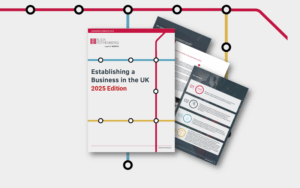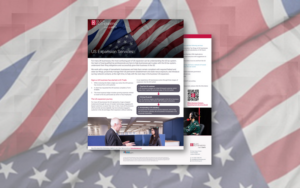Valentines tax tips – it’s the thought that counts
Roses are red, Violets are blue, here’s some Valentines tax tips for your partner and you!
According to Blick Rothenberg Director Stefanie Tremain: “Tax tips may not be that romantic, but they could make a difference to your tax position and will certainly be appreciated.”
There are a number of things that you can do, such as giving your spouse/civil partner 10% of your Personal Allowance.
If your taxable income is below the Personal Allowance (currently £12,570) and your spouse/civil partner is a basic rate taxpayer, you can transfer up to 10% of your Personal Allowance which could save them tax of up to £252. You can also backdate the claim to include any tax year from 5 April 2017 onwards, provided you both met the criteria in the relevant year.
You could make a wedding gift. There are longstanding Inheritance Tax exemptions for gifts on marriage/civil partnership still available. The exemption ensures gifts of up to £1,000 per couple are immediately exempt from Inheritance Tax. This amount is increased to £2,500 for gifts to grandchildren and £5,000 for gifts to children.
If you’re thinking of transferring assets to your beloved, wait until you’re married. Transfers of assets (such as shares or property) between spouses/civil partners are free from Capital Gains Tax and Inheritance Tax, but if an asset is transferred before marriage/civil partnership, the normal tax rules apply.
You can also contribute to your spouse/civil partner’s pension. Pension Relief has been restricted for high earners, but you can contribute to your spouse/civil partner’s pension, although any tax relief belongs to them. For taxpayers with no ‘relevant earnings’ the maximum pension contribution that can be made in a tax year is £2,880 net (£3,600 gross).
There are many different options for charitable gifts as well, such as sponsorships, animal adoptions, etc. Not only can this be a more meaningful gift, but you can also claim Gift Aid relief on the donation, which means the charity gets an extra 25% from the Government. Higher or additional rate taxpayers can claim further tax relief from HM Revenue & Customs, so you should also consider who makes the donation to maximise the relief.
Gift aid donations are also flexible. The relief on a donation can be carried back to use in the previous tax year, provided that the donation is made prior to the submission of the tax return, and that return is submitted by the due date i.e. the relief on donations made in the period from 6 April 2022 to 31 January 2023 could potentially be used to reduce the tax liability of the tax year ended 5 April 2022, depending on when that return is submitted.
If you have made Gift Aid donations in the past and not claimed further tax relief, a claim can be made for up to four years after the year in which the donation was made. For example, relief for a donation made in 2021/22 can be claimed up to 5 April 2026.
If your partner didn’t submit their 2020/21 tax return before 31 January, save them a £100 late filing penalty and remind them they need to submit it by 28 February 2022.
Hopefully next year will be different and more traditional, but it’s always the thought that counts.
Would you like to know more?
If you would like to discuss the above or how it may affect you and your business, please get in touch with Stefanie Tremain or your usual Blick Rothenberg contact using the details on this page.
For press enquiries, please contact David Barzilay.
Contact Stefanie

You may also be interested in

Unlocking Growth: What the Government’s 2025 Industrial Strategy Means for the UK’s Creative Sector

A ray of hope for the Property Market: HMRC transaction data suggests recovery momentum













